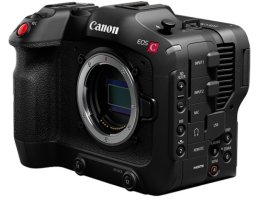Lol. So many people say they want this 100mp camera but haven't thought about the computer side of this. My 2017 MacBook Pro already shows a significant slow down using 45mp R5 raw files vs my 30mp R raw files. I wouldn't want to have to push 100mp images through this. I guess if you were just working on a suped up Mac Pro (starting at $6000) you probably wouldn't flinch.
Well, you *are* talking about a 4 year old computer...laptop at that, that these days, can no longer be upgraded by user easily (if at all).
While it appears that the new Apple chips (M1?) is very capable, these days I'm of the mindset that while a laptop is VERY useful while out on the road, if you are doing any serious photography and video work, it may not be the smartest investment for doing hard work at home/office doubling as your main computer.
I used to use my MBP mostly as a desktop...it was always on a rack, plugged in and hooked to large external monitors, keyboards (I love the old IBM style buckling "clicky" ones)....wacom tablet and external working drives (for image files and one SSD dedicated for cache for various apps).
But with image capture tech changing so fast, and higher and higher fidelity files coming in with accompanying size increases, I'm not so sure the laptop for everything paradigm is as valid as it used to be.
I did spring last year for a Mac Pro.....for it to be upgradeable. However, I may get zonked with this myself, since Apple has switched away from Intel....I'm actually hoping at some point, there will be a chip/motherboard upgrade at some point offered so I could keep the MP up to date as long as possible.
I mean for now, I"m not worried, but I would prefer this large of an investment to last 8-10 years if possible with upgrades.
But anyway...this has been something that has been simmering in the back of my brain for awhile. It is time again when purchasing computer equipment for our media needs...to try to plan for ever taxing needs on both storage and processing (CPU and especially GPU) power.
Disk space, is the relatively easy one....
I"m currently working with 100MP images, about to experiment with pixel shifting to a 400MP one where the resultant image is about 1.25GB each....
I had to really spend a few weeks cleaning off my existing external work drive....I'm currently looking into maybe seeing what type NAS multi-drive system I can replace my single large external working drive with...that would prove expandable over time by adding larger and larger individual drives.
I see the future...and it takes up a
LOT of space.
Sure, no one is throwing out masterpiece images of the not too distant past taken and printed form 8-10MP sensors.
But, that's not where things are going....so, it is something to keep in mind while planning, since photography/videography doesn't stop with the camera shutter activation.
Just my $0.02,
cayenne

